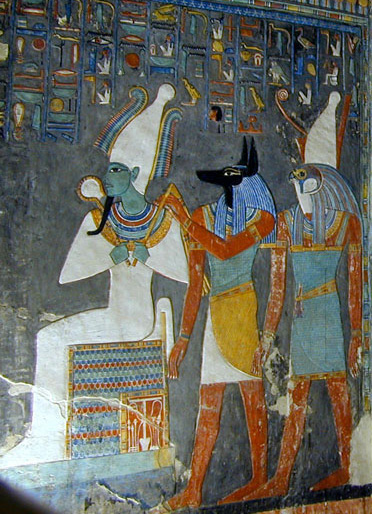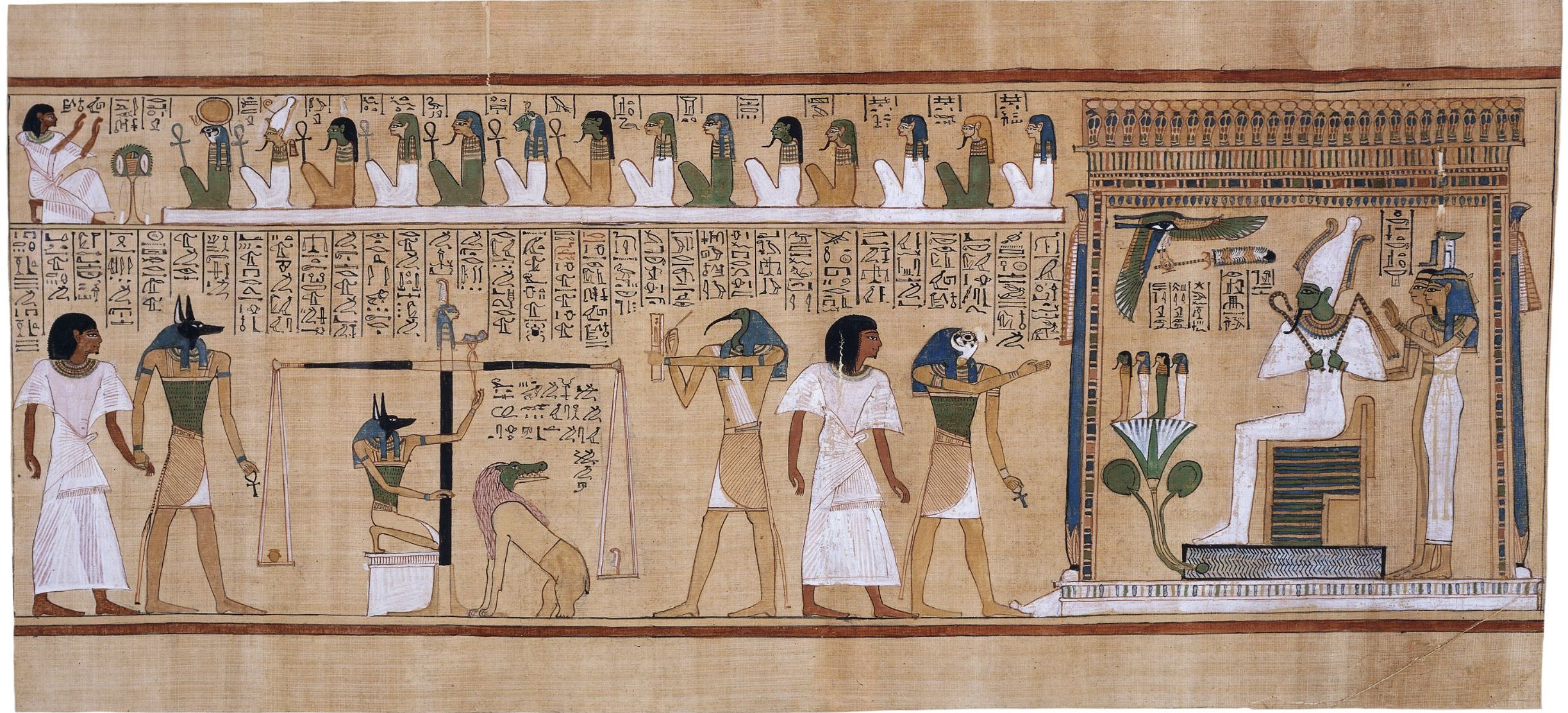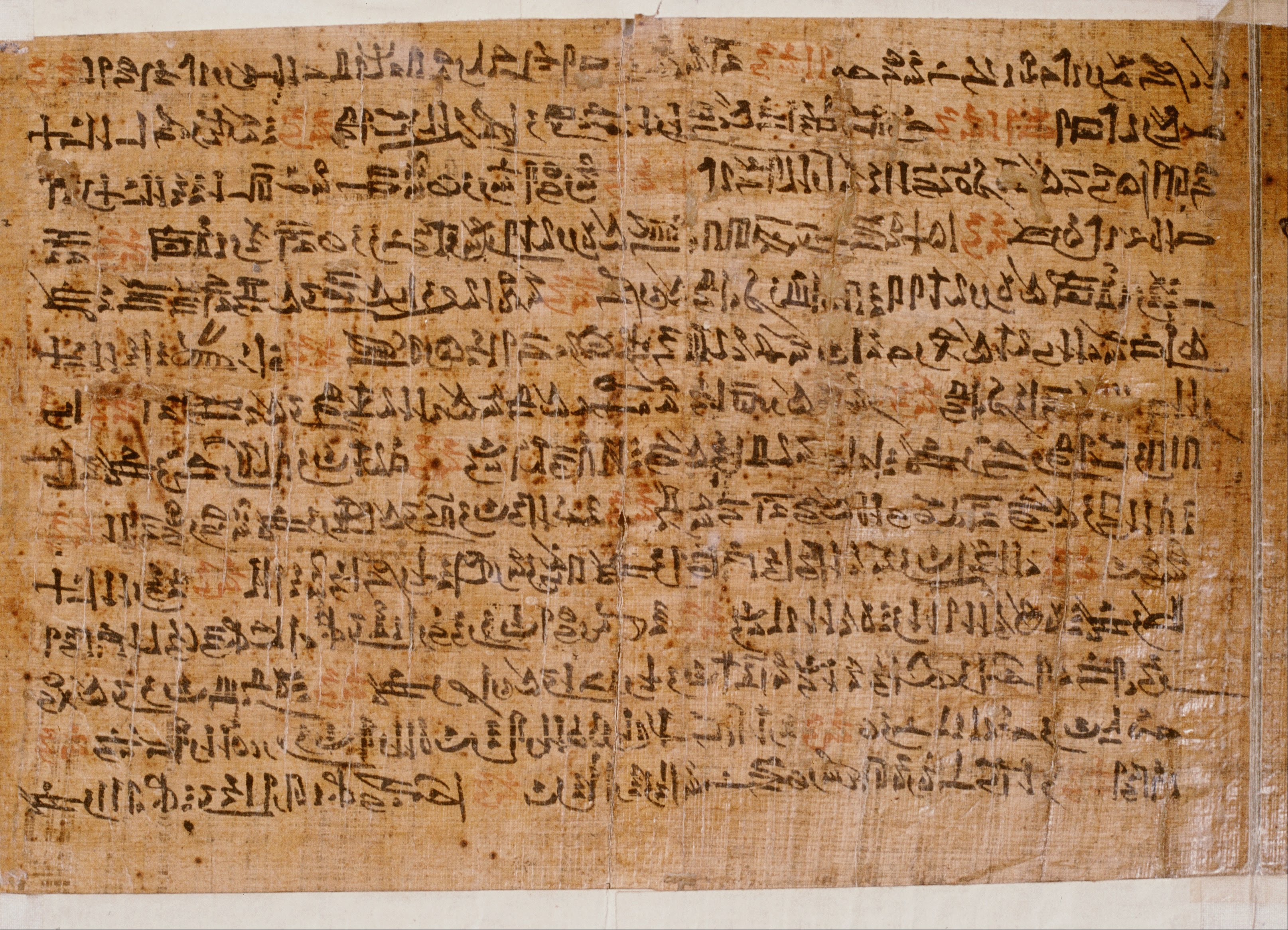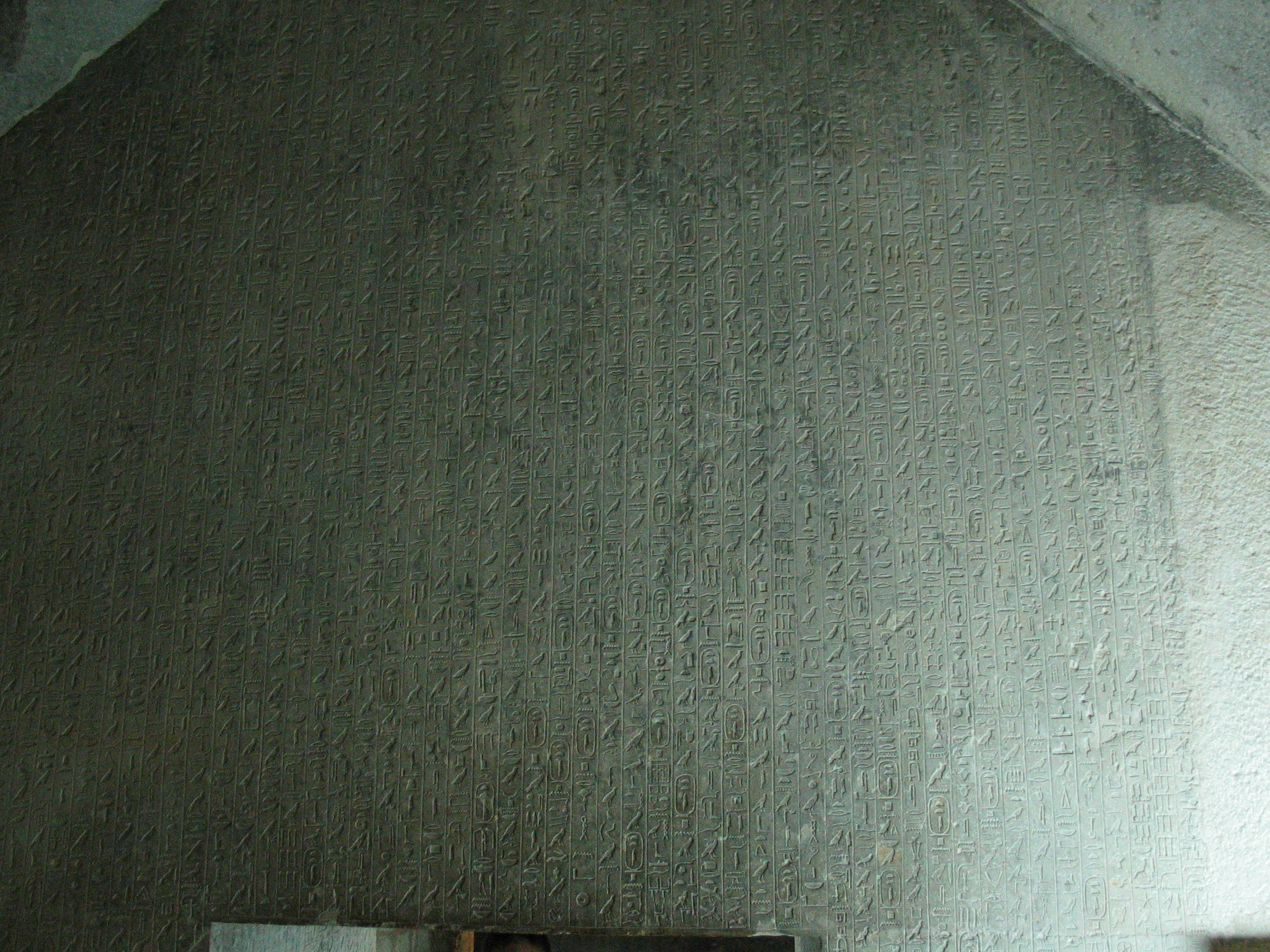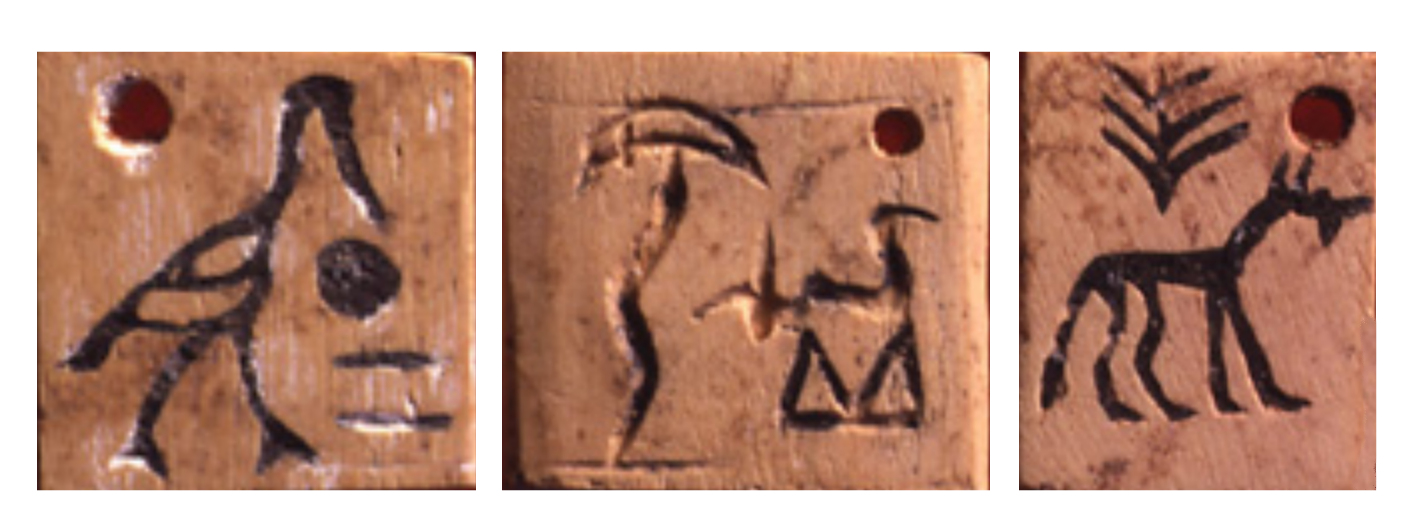|
Khenti-Amentiu
Khenti-Amentiu, also Khentiamentiu, Khenti-Amenti, Kenti-Amentiu and many other spellings, is an ancient Egyptian deity whose name was also used as a title for Osiris and Anubis. The name means " Foremost of the Westerners" or "Chief of the Westerners", where "Westerners" refers to the dead.Wilkinson, Richard H. ''The Complete Gods and Goddesses of Ancient Egypt''. pp. 119, 187. Thames & Hudson. 2003. Khenti-Amentiu was depicted as a jackal-headed deity at Abydos in Upper Egypt, who stood guard over the city of the dead. Khenti-Amentiu is attested early at Abydos, perhaps even earlier than the unification of Egypt at the start of the Early Dynastic Period (c. 3100–2686 BC). The name appears on the necropolis cylinder seals for the First Dynasty pharaohs Den and Qa'a, naming each of their predecessors with the title "Horus Khenti-Amentiu", starting with "Horus Khenti-Amentiu Narmer". A temple dating to predynastic times was also founded in Abydos for this god. Toby Wilkinso ... [...More Info...] [...Related Items...] OR: [Wikipedia] [Google] [Baidu] |
Osiris
Osiris (, from Egyptian ''wikt:wsjr, wsjr'') was the ancient Egyptian deities, god of fertility, agriculture, the Ancient Egyptian religion#Afterlife, afterlife, the dead, resurrection, life, and vegetation in ancient Egyptian religion. He was classically depicted as a green-skinned deity with a Pharaoh, pharaoh's beard, partially mummy-wrapped at the legs, wearing a distinctive atef crown and holding a symbolic crook and flail. He was one of the first to be associated with the mummy wrap. When his brother Set (deity), Set cut him to pieces after killing him, with her sister Nephthys, Osiris' sister-wife, Isis, searched Egypt to find each part of Osiris. She collected all but one – Osiris’s genitalia. She then wrapped his body up, enabling him to return to life. Osiris was widely worshipped until the decline of ancient Egyptian religion during the Christianization of the Roman Empire, rise of Christianity in the Roman Empire. Osiris was at times considered the eldest son of ... [...More Info...] [...Related Items...] OR: [Wikipedia] [Google] [Baidu] |
Anubis
Anubis (; ), also known as Inpu, Inpw, Jnpw, or Anpu in Ancient Egyptian (), is the god of funerary rites, protector of graves, and guide to the underworld in ancient Egyptian religion, usually depicted as a canine or a man with a canine head. Like many ancient Egyptian deities, Anubis assumed different roles in various contexts. Depicted as a protector of graves as early as the First Dynasty (), Anubis was also an embalmer. By the Middle Kingdom (c. 2055–1650 BC) he was replaced by Osiris in his role as lord of the underworld. One of his prominent roles was as a god who ushered souls into the afterlife. He attended the weighing scale during the "Weighing of the Heart", in which it was determined whether a soul would be allowed to enter the realm of the dead. Anubis is one of the most frequently depicted and mentioned gods in the Egyptian pantheon; however, few major myths involved him. Anubis was depicted in black, a color that symbolized regeneration, life, the soil ... [...More Info...] [...Related Items...] OR: [Wikipedia] [Google] [Baidu] |
Ancient Egyptian Deity
Ancient Egyptian deities are the gods and goddesses worshipped in ancient Egypt. The beliefs and rituals surrounding these gods formed the core of ancient Egyptian religion, which emerged sometime in prehistory. Deities represented natural forces and phenomena, and the Egyptians supported and appeased them through offerings and rituals so that these forces would continue to function according to ''maat'', or divine order. After the founding of the Egyptian state around 3100 BC, the authority to perform these tasks was controlled by the pharaoh, who claimed to be the gods' representative and managed the temples where the rituals were carried out. The gods' complex characteristics were expressed in myths and in intricate relationships between deities: family ties, loose groups and hierarchies, and combinations of separate gods into one. Deities' diverse appearances in art—as animals, humans, objects, and combinations of different forms—also alluded, through symbolism, t ... [...More Info...] [...Related Items...] OR: [Wikipedia] [Google] [Baidu] |
Abydos, Egypt
Abydos ( or ; Sahidic ') is one of the oldest cities of ancient Egypt, and also of the Ta-wer, eighth Nome (Egypt), nome in Upper Egypt. It is located about west of the Nile at latitude 26° 10' N, near the modern Egyptian towns of El Araba El Madfuna and El Balyana. In the ancient Egyptian language, the city was called Abedju (''ꜣbḏw'' or ''AbDw'')(Arabic Abdu عبد-و). The English name ''Abydos'' comes from the Greek language, Greek , a name borrowed by Greek geographers from the unrelated city of Abydos, Hellespont, Abydos on the Hellespont. Considered one of the most important archaeological sites in Egypt, the sacred city of Abydos was the site of many ancient Egyptian temple, temples, including Umm el-Qa'ab, a royal necropolis where early pharaohs were entombed. These tombs began to be seen as extremely significant burials and in later times it became desirable to be buried in the area, leading to the growth of the town's importance as a cult site. Today, Abydos ... [...More Info...] [...Related Items...] OR: [Wikipedia] [Google] [Baidu] |
Ancient Egyptian Offering Formula
The offering formula, also known under transliterated forms of its incipit as the ''ḥtp-ḏỉ-nsw'' or ''ḥtp-ḏj-nswt'' formula was a conventional dedicatory formula inscribed on ancient Egyptian funerary objects, believed to allow the deceased to partake in offerings presented to the major deities in the name of the king, or in offerings presented directly to the deceased by family members. It is among the most common of all Middle Egyptian texts. Its incipit ḥtp-ḏj-nswt "an offering given by the king" is followed by the name of a deity and a list of offerings given. The offering formula is usually found carved or painted onto stelae, false doors, coffins, figurines, and myriad other funerary goods. Each person had their own name and titles put into the formula. The offering formula was not a royal prerogative like some of the other religious texts such as the Litany of Re, and was used by anyone who could afford to have one made. History and development Origins ... [...More Info...] [...Related Items...] OR: [Wikipedia] [Google] [Baidu] |
Underworld Gods
The underworld, also known as the netherworld or hell, is the supernatural world of the dead in various religious traditions and myths, located below the world of the living. Chthonic is the technical adjective for things of the underworld. The concept of an underworld is found in almost every civilization and "may be as old as humanity itself". Common features of underworld myths are accounts of living people making journeys to the underworld, often for some heroic purpose. Other myths reinforce traditions that the entrance of souls to the underworld requires a proper observation of ceremony, such as the ancient Greek story of the recently dead Patroclus haunting Achilles until his body could be properly buried for this purpose. People with high social status were dressed and equipped in order to better navigate the underworld. A number of mythologies incorporate the concept of the soul of the deceased making its own journey to the underworld, with the dead needing to be take ... [...More Info...] [...Related Items...] OR: [Wikipedia] [Google] [Baidu] |
Egyptian Death Gods
''Egyptian'' describes something of, from, or related to Egypt. Egyptian or Egyptians may refer to: Nations and ethnic groups * Egyptians, a national group in North Africa ** Egyptian culture, a complex and stable culture with thousands of years of recorded history ** Egyptian cuisine, the local culinary traditions of Egypt * Egypt, the modern country in northeastern Africa ** Egyptian Arabic, the language spoken in contemporary Egypt ** A citizen of Egypt; see Demographics of Egypt * Ancient Egypt, a civilization from c. 3200 BC to 343 BC ** Ancient Egyptians, ethnic people of ancient Egypt ** Ancient Egyptian architecture, the architectural structure style ** Ancient Egyptian cuisine, the cuisine of ancient Egypt ** Egyptian language, the oldest known language of Egypt and a branch of the Afroasiatic language family * Copts, the ethnic Egyptian Christian minority ** Coptic language or Coptic Egyptian, the latest stage of the Egyptian language, spoken in Egypt until the 17th ... [...More Info...] [...Related Items...] OR: [Wikipedia] [Google] [Baidu] |
Amenti
The Duat or Tuat (Ancient Egyptian: Hieroglyph: 𓇽 romanized: dwꜣt) is a concept in ancient Egyptian mythology involving death. It is most often seen as a realm where people go after they die. Due to linguistic shifts within Ancient Egypt, the ''Duat'' has also been called Te () and Amenthes (). What is known of the ''Duat'' derives principally from funerary texts such as the ''Book of Gates'', the ''Book of Caverns'', the ''Coffin Texts'', the ''Amduat'', and the ''Book of the Dead,'' among many other sources. It is generally known best as a dark subterranean realm that not only houses the deceased, but a variety of deities. Common deities depicted in these texts are Osiris, Anubis, Thoth, Horus, and Maat in various forms. While all of these documents involve the ''Duat'', each of them fulfilled a different purpose and depict the ''Duat'' in a variety of unique ways. Overview This realm is most often depicted as a setting for a variety of rituals and mythological event ... [...More Info...] [...Related Items...] OR: [Wikipedia] [Google] [Baidu] |
First Intermediate Period
The First Intermediate Period, described as a 'dark period' in ancient Egyptian history, spanned approximately 125 years, c. 2181–2055 BC, after the end of the Old Kingdom of Egypt, Old Kingdom. It comprises the seventh Dynasty, Seventh (although this is mostly considered spurious by Egyptologists), eighth dynasty of Egypt, Eighth, Ninth dynasty of Egypt, Ninth, Tenth dynasty of Egypt, Tenth, and part of the Eleventh dynasty of Egypt, Eleventh List of Egyptian dynasties, Dynasties. The Periodization of Ancient Egypt, concept of a "First Intermediate Period" was coined in 1926 by Egyptologists Georg Steindorff and Henri Frankfort. Very little monumental evidence survives from this period, especially from the beginning of the era. The First Intermediate Period was a dynamic time in which rule of Egypt was roughly equally divided between two competing power bases. One of the bases was at Herakleopolis Magna, Heracleopolis in Lower Egypt, a city just south of the Faiyum region, and ... [...More Info...] [...Related Items...] OR: [Wikipedia] [Google] [Baidu] |
Pyramid Texts
The Pyramid Texts are the oldest ancient Egyptian funerary texts, dating to the late Old Kingdom. They are the earliest known corpus of ancient Egyptian religious texts. Written in Old Egyptian, the pyramid texts were carved onto the subterranean walls and sarcophagi of pyramids at Saqqara from the end of the Fifth Dynasty, and throughout the Sixth Dynasty of the Old Kingdom, and into the Eighth Dynasty of the First Intermediate Period. The oldest of the texts have been dated to –2300 BCE. Unlike the later Coffin Texts and '' Book of the Dead'', the Pyramid Texts were reserved only for the pharaoh and were not illustrated. The use and occurrence of Pyramid Texts changed between the Old, Middle, and New Kingdoms of Ancient Egypt. During the Old Kingdom (2686 BCE – 2181 BCE), Pyramid Texts could be found in the pyramids of kings as well as three queens, named Wedjebten, Neith, and Iput. During the Middle Kingdom (2055 BCE – 1650 BCE), Pyramid Texts were not writte ... [...More Info...] [...Related Items...] OR: [Wikipedia] [Google] [Baidu] |
Determinative
A determinative, also known as a taxogram or semagram, is an ideogram used to mark semantic categories of words in logographic scripts which helps to disambiguate interpretation. They have no direct counterpart in spoken language, though they may derive historically from glyphs for real words, and functionally they resemble classifiers in East Asian and sign languages. For example, Egyptian hieroglyphic determinatives include symbols for divinities, people, parts of the body, animals, plants, and books/abstract ideas, which helped in reading but were not pronounced. Cuneiform In cuneiform texts of Sumerian, Akkadian and Hittite languages, many nouns are preceded or followed by a Sumerian word acting as a determinative; this specifies that the associated word belongs to a particular semantic group.Edzard, 2003 These determinatives were not pronounced. In transliterations of Sumerian, the determinatives are written in superscript in upper case. Whether a given sign is a m ... [...More Info...] [...Related Items...] OR: [Wikipedia] [Google] [Baidu] |
Hieroglyph
Ancient Egyptian hieroglyphs ( ) were the formal writing system used in Ancient Egypt for writing the Egyptian language. Hieroglyphs combined ideographic, logographic, syllabic and alphabetic elements, with more than 1,000 distinct characters.In total, there were about 1,000 graphemes in use during the Old Kingdom period; this number decreased to 750–850 during the Middle Kingdom, but rose instead to around 5,000 signs during the Ptolemaic period. Antonio Loprieno, ''Ancient Egyptian: A Linguistic Introduction'' (Cambridge: Cambridge UP, 1995), p. 12. Cursive hieroglyphs were used for religious literature on papyrus and wood. The later hieratic and demotic Egyptian scripts were derived from hieroglyphic writing, as was the Proto-Sinaitic script that later evolved into the Phoenician alphabet. Egyptian hieroglyphs are the ultimate ancestor of the Phoenician alphabet, the first widely adopted phonetic writing system. Moreover, owing in large part to the Greek and Aramaic sc ... [...More Info...] [...Related Items...] OR: [Wikipedia] [Google] [Baidu] |
